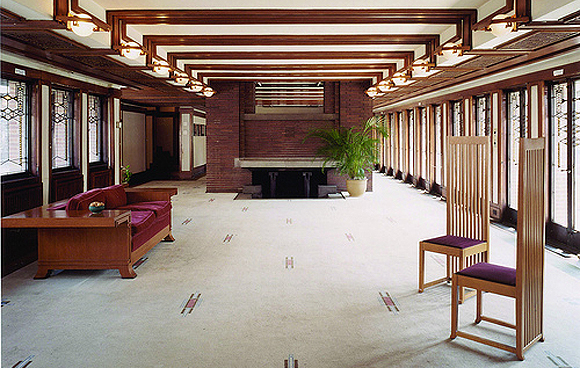[1] Select an object or a building from any time period that you believe meets Wotton’s definition (as cribbed from Vitruvius) of commodity, firmness, and delight. With an annotated image, take care to EXPLAIN the ways in which you see the definition realized through the object or building. Use design language and concepts discussed in class for dealing with precedents (5 points).
The house has exposed perceptual structure through the materiality of the beams running horizontally on the ceiling and vertically along the window screens while also having a grounded physical structure through its stretched, horizontal foundation.
Lastly, I believe the house brings delight through the fusion of function and structure. For example, the functional wooden beams create a long repetition, which creates a harmonious rhythm and sense of delight. Also, while the structural materiality reassures protection the structural light screen also dematerializes the side of the home and floods our sensory environment with light.
[2] Working from Harwood et al’s concept of cultural precedents, select one of the contemporary textiles illustrated above and PINPOINT the influences you see from the eastern world on the production of fabric in the west. Concentrate on motifs and patterns provided in Harwood’s text (5 points).
The first image represents a distinct oriental style through its form of harmony and symbolic geometry. There have been several movements in the past century that have caught the attention of Western civilization that are based in the Eastern World’s concept of simplicity and nature. The Arts and Crafts movement of the early 20th century sparked American interest in fine craftsmanship and minute attention to detail commonly seen in Japanese decorative arts. This minute attention to detail and formalistic symbolism of nature permeates this fabric design. Also, since the 1960’s increasing environmental concerns have sensationalized Eastern style and its focus on man’s place in nature as opposed to the Western philosophy that man is the measure of all things. This fabric design represents the influence of a pristine symmetrical concept that is based in symbolic motifs of nature.
[3] When considering perceptions of personal and social space, Hall and others suggest that different cultures have different space needs and attitudes. Most consider that citizens of the U.S. generally feel a need for more space. How does this play out in the classroom in which we gather for iar222? (5 points)
Hall states that a man’s perception of space is based on his culture and I believe that the widely acclaimed notion that Americans feel the need for more space is clearly evident in comparison to the lecture hall. Just like every other culture we have a silent language of spatial awareness. Growing up in an American culture, I feel that the seats are not thoughtfully spaced out and the arm rests do not accommodate enough space for two individuals who are sitting next to each other when one is right handed and the other left handed. After talking with other students their experience in the space is also quite similar.
[4] SPECULATE about whether or not there can be an architecture of happiness, as de Botton writes in the work by the same title. Provide a juicy quote that helps give evidence to your views from the passage that you read. Include an annotated image of a happy object, space, building, or place and specify WHY and HOW your example exudes happiness (5 points)
First of all, I believe de Botton completely overanalyzes the negative effects that architecture has on our lives because even though architecture takes up time, resources, and patience it can also be the challenge that brings us happiness in architecture.
However, I believe that architecture provides the most delight when commodity and firmness are the primary goals.
“Belief in the significance of architecture is premised on the notion that we are, for better or for worse, different people in different places”
Perhaps it’s the minimalist designer in me, but I believe that delight is the most controversial aspect in architecture because of the quote above, ‘different people in different places’. I believe that over the range of all cultures and locations happiness is derived more from function: how light enters a space, the ideal circulation of space, the spatial ergonomics and structure: how the materials are placed, joined, and proportioned rather than in the fluctuations in moods and style periods that constitutes delight.
I think this space permeates delight because its form is based primarily on function and structure. For example, the frosted glass material offers a glowing light source that floods the room with light and which are also functional walls that open the circulation space. By focusing on these elements of architecture delight automatically follows.

